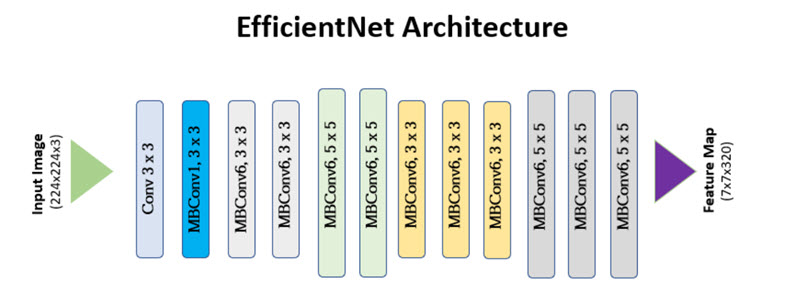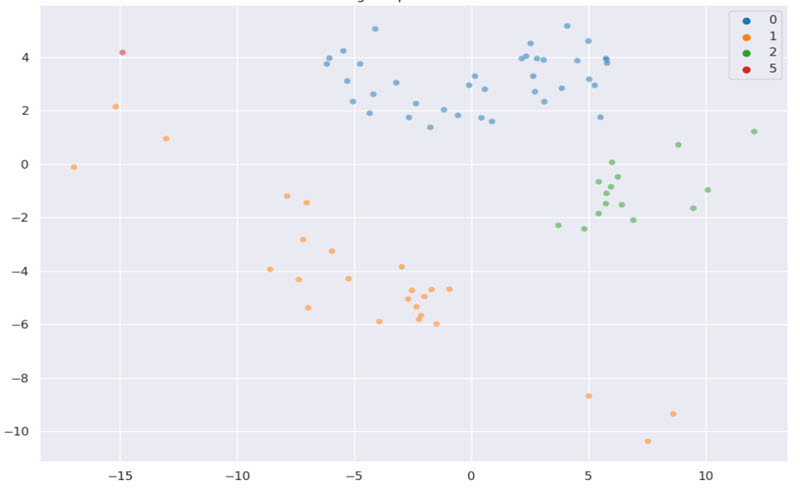In this project we Comprehensive Framework to address both Open-set recognition and determine the label/cluster of new unseen classes. Our model consists of two different parts, in the first part we try to utilize a deep neural network to extract more generalizable embedding from Input data. And also separate the seen classes (and classify them) from unseen new classes. In the second part, we try to cluster the unseen new classes with Non-Parametric Bayesian models to achieve more accurate results in test time. In the next paragraphs, we will dive into the technical details of each block. In the first module, we use the EfficientNet[1] structure as a base model. EfficientNet is a convolutional neural network architecture and scaling method that uniformly scales all dimensions of depth/width/resolution using a compound coefficient. This network has an architecture as follows:
This convolution block follows a fully connected layer (which first layer size is the desired embedding size used in the next block) to learn to classify the class label (from seven seen class). In this block we do some tricks to have more generalization:
- We use a learning rate scheduler while training model
- We use RandAug augmentation to make some diverse samples for our model. [2]
- We also use label smoothing to make more robust features [3] The classification accuracy for the seen class while training and testing is as follows:
In the first block we separate the seen class from the open set and pass the unknown data into our Supervised Contrastive Kmeans Dirichlet process Gaussian mixture model(SCKDG) in which a semi Expectation Maximization Algorithm is used so that in expectation phase we try to find the best-fit clustering for a desired embedding and in maximization step we find the most separate embedding for the desired clustering with the supervised contrastive learning algorithm, and continue this training procedure until convergence (or iterate until max_epoch).
The final accuracy of this part is 63%. the visualization of the clustering output of our model on test is as follows:
[1] Koonce, B. and Koonce, B., 2021. EfficientNet. Convolutional Neural Networks with Swift for TensorFlow: Image Recognition and Dataset Categorization, pp.109-123. [2] Cubuk, E.D., Zoph, B., Shlens, J. and Le, Q.V., 2020. Randaugment: Practical automated data augmentation with a reduced search space. In Proceedings of the IEEE/CVF conference on computer vision and pattern recognition workshops (pp. 702-703). [3] Vaze, S., Han, K., Vedaldi, A. and Zisserman, A., 2021. Open-set recognition: A good closed-set classifier is all you need. arXiv preprint arXiv:2110.06207. [4] Jaiswal, Ashish, Ashwin Ramesh Babu, Mohammad Zaki Zadeh, Debapriya Banerjee, and Fillia Makedon. "A survey on contrastive self-supervised learning." Technologies 9, no. 1 (2020): 2. [5] Khosla, Prannay, Piotr Teterwak, Chen Wang, Aaron Sarna, Yonglong Tian, Phillip Isola, Aaron Maschinot, Ce Liu, and Dilip Krishnan. "Supervised contrastive learning." Advances in neural information processing systems 33 (2020): 18661-18673.


